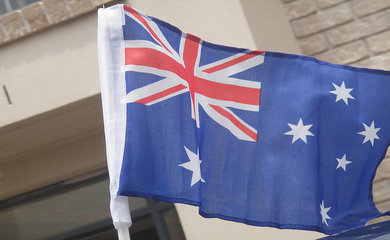Australia faces a federal election on 7 September, and the rise of the right wing is troubling I don’t mean to predict a win by the right wing Liberal Party over the centre-left Labor Party, which is currently in power. Nor do I point to how both parties’ refugee policies have undergone a rightward shift that has prompted an outcry from the United Nations. The disconcerting thing is the rise of minor right wing parties. If this sounds a strange thing to be concerned about under a two party system, kindly sit for your Australian civics lesson. I do not promise a pleasant ride.
I thought we were living in a bizarre mirror world when Labor, which has a pro-same sex marriage platform, announced they wanted to send refugees to Papua New Guinea, where it’s illegal for men to have sex with each other. So much for people seeking asylum on the basis of homophobic persecution. That’s one thing: Labor and the Liberals have twisted much of public opinion against those who perfectly legally seek asylum. You can see the pattern in that illogic. There has been no popular public campaign, however, to close all the mosques or popularise neo-Nazism. Nevertheless, many people voting above the line on the Senate ballots are inadvertently lodging preferences for exactly that, thanks to a lack of transparency on the part of major parties.
Here’s how it works. One of the proudest moments of my life took place three years ago, during my first time voting in an Australian federal election. I had carefully researched how to vote properly. To vote for who one wants as one’s local member in the House of Representatives, one had to rank a small number of candidates on a little green piece of paper. To vote in the Senate, there were two options. One could mark “1” in one box above a line on the Senate ballot paper, which would mean one would vote with the preferences of the single party one had chosen in a group voting ticket. Alternatively, one could vote below the line and rank every single candidate, missing or mismarking not a box. Enthusiastic teenage me researched and ranked the eighty-six candidates vying for the six senate spots available in my state, New South Wales.
My proud moment wasn’t that. It was placing in the lowest spots the candidates for One Nation, the right wing party that had spread racist hatred from its inception in 1997. It was the party, founded by Pauline Hanson, that had risen to prominence opposing any policies supporting Indigenous or immigrant Australians, particularly Asians. A decade back, it was the party supported by right wing white folks who wanted people like me to get back to where we came from (because apparently white people can belong in Australia in ways the rest of us cannot). Hanson didn’t win a Senate seat in the 2001 election, not because she didn’t get many votes, but because One Nation did not receive high enough preferencing from the other parties in their group voting tickets.
Preferencing can make or break minor parties, which is where the 2013 rise of the right comes in. For Victoria’s Senate ballot, the Liberals preferenced Rise Up Australia, an anti-Islamic party with the slogan “Keep Australia Australian,” ahead of the Greens, who are for refugee rights, the environment, and LGBT equality. In Western Australia, the Wikileaks Party, who we might have thought reasonably left wing, placed the Greens, Liberals, and Labor behind the Australia First Party, which is exactly what it sounds like. They’re now claiming this was an accident, but, well, see former party national council member Daniel Mathews at The Guardian for his perspective on how ambition won over principle. The Wikileaks Party has fallen apart as a result, which is frankly the sort of thing that should happen to your party if you preference Australia First, which is, I kid you not, chaired by a neo-Nazi called Jim Saleam, who organised the 1989 shooting of the African National Congress’ Australian representative, Eddie Funde.
Australians are not getting what we are being promised, with Wikileaks’ talk of left wing idealism and Liberal leader Tony Abbott’s statement that “frankly racist” parties would be preferenced behind the Greens. There’s no attempt to win over the public here because most Australians would not now countenance anything this explicitly xenophobic against Australian citizens (although, of course, many people believe that sending refugees to their countries of origin or into nightmarish detention centres is fine). And that lack of explicitness opens the way for this sly preferencing, right alongside the return of extremist right wingers who have more of a chance.
Australia First or Rise Up Australia aren’t going to become major parties any time soon, or, one hopes, at all. That they could have any influence is a terrifying prospect. That they have sway with some of the populace, and some mainstream parties, is a terrifying certainty.
Photo by marragem, licensed under a Creative Commons Attribution-ShareAlike 2.0 Generic license


One thought on “The Rise of Far Right Parties in Australia”
Comments are closed.